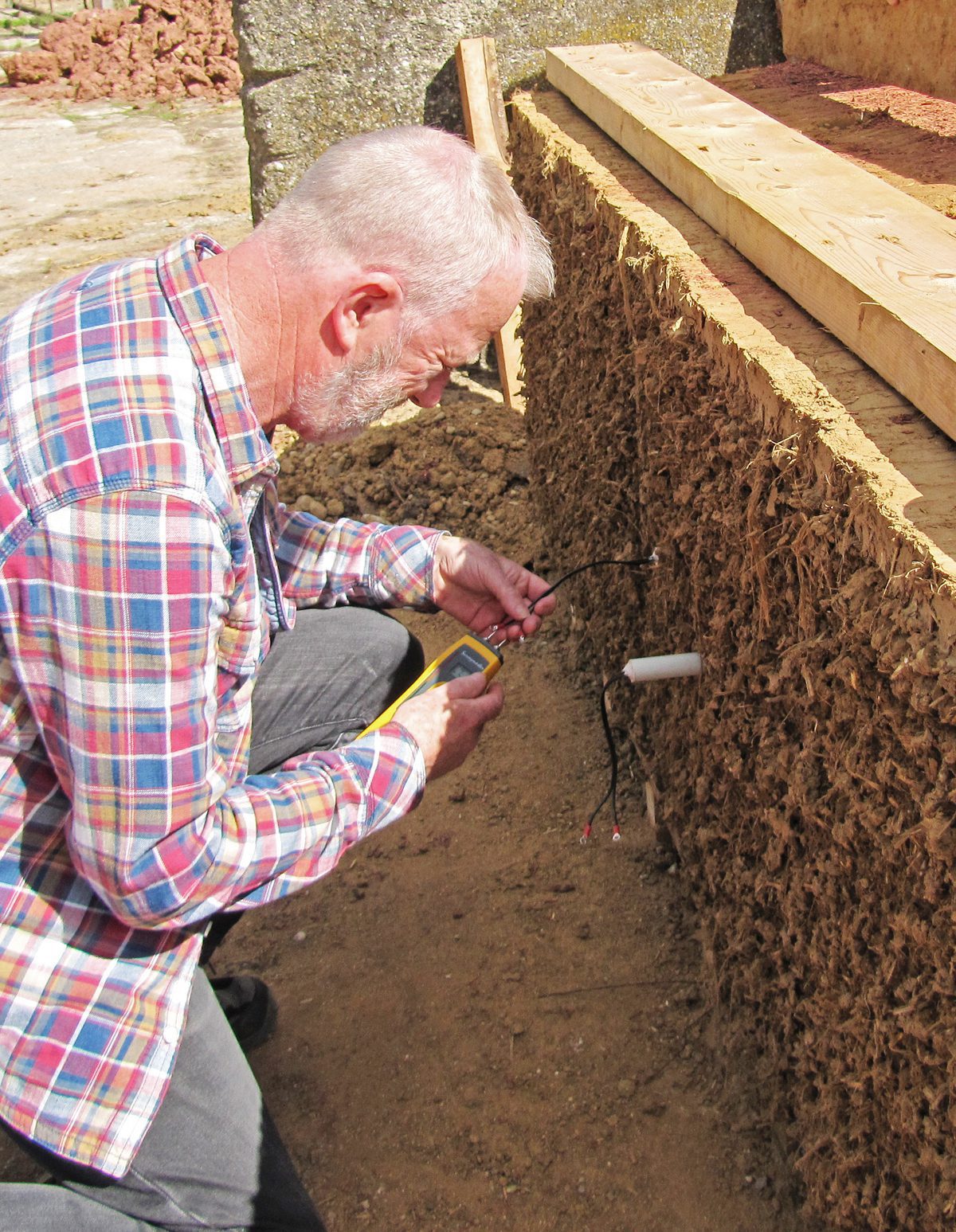The international CobBauge collaboration aims to give new impetus to a traditional building material, says Anthony Hudson
Living more sustainably and reducing our shared carbon footprint have become key parts of our lives. While we can make individual lifestyle changes, it’s hard to ignore the hard facts when it comes to the built environment. According to latest research, the construction, operation and maintenance of buildings accounts for 45 per cent of total UK carbon emissions – with the thermal control of buildings accounting for roughly 60 per cent of that.
Before the introduction of standardised modern materials in the early twentieth century, material usage was much more sustainable. Thatching was extremely common in rural locations, as was cob building; where subsoil and straw were used to build structural walls. However, while they may be quaint, none of the existing cob houses in Britain comply with Part L of the Building Regulations.
The international CobBauge group aims to remediate this situation. Led by the University of Plymouth with ESITC Caen, PnrMCB Regional Parc, Earth Building UK and Ireland, the University of Caen, and our team at Hudson Architects, it has delivered exciting research intended to marry together the low carbon properties of cob with the demands of modern living.
The project, funded by the European Union’s Interreg VA France (Channel) England Programme and European Regional Development Fund (ERDF), completed its first phase in 2018. The result was a unique double-layer cob wall, a key component being the use of hemp fibres instead of the wheat straw traditionally used. The new cob material had to perform consistently in tests of stability, thermal properties, durability and absorption.
The perfected system works by combining both dense and lightweight versions of the material to provide a combination of strength and insulation. Hemp’s outer layer creates a stronger fibre mix than is produced by wheat, and is more suited to the UK climate than reed or flax, therefore this was used in the structural layer of the composite wall. The inner layer of the hemp proved to be the best insulator, so this formed the basis of the thermal layer of the CobBauge wall.
Above: The cob wall model being moved as the CobBauge project results are presented by researchers at The University of Plymouth and from France; Tiles were assessed for thermal conductivity using Heat Flow Meter (HFM) equipment, and the built sample walls were tested on site.
Stages two and three will involve detailed technical reviews of two buildings on sites in Norfolk and Normandy. These pilot houses will demonstrate the application of CobBauge in a real-world environment, giving architects and other specialists a chance to see live case studies. Following completion of the builds, a two-year monitoring process will collect thermal performance and energy consumption data, which will allow the performance of the CobBauge to be assessed in varying climate conditions, and compared to standard building materials.
The final stage will involve forecasting the lifecycle impact of CobBauge. Central to the project team’s case for the material is the fact that it should have a lower embodied energy, and better operational energy performance than other materials.
Beyond the pilot houses, the trials create a route to achieve the CobBauge team’s future goals. These include the ambition to construct 1500 CobBauge homes in the ten years after the initial project is complete, with building concentrated in areas that have suitable subsoil. There is a potential to build substantial housing estates from the material, which could help increase the housing supply as well as tackling the climate crisis, “addressing head-on the need for affordable, sustainable and energy efficient dwellings”, according to professor Steve Goodhew of Plymouth University.
Cob is old technology, and in some ways it always has been old. Clough Williams-Ellis – a tireless campaigner for the environment – wrote about reintroducing cob and earth-based materials in 1919. When the lab data is verified by the pilot schemes, perhaps Clough’s revival will have finally arrived. Once that moment comes, perhaps more of us will be enjoying environments free from the toxicity of synthetic materials, living in homes with an extended lifespan, and above all reducing our impact on the world we inhabit.

















